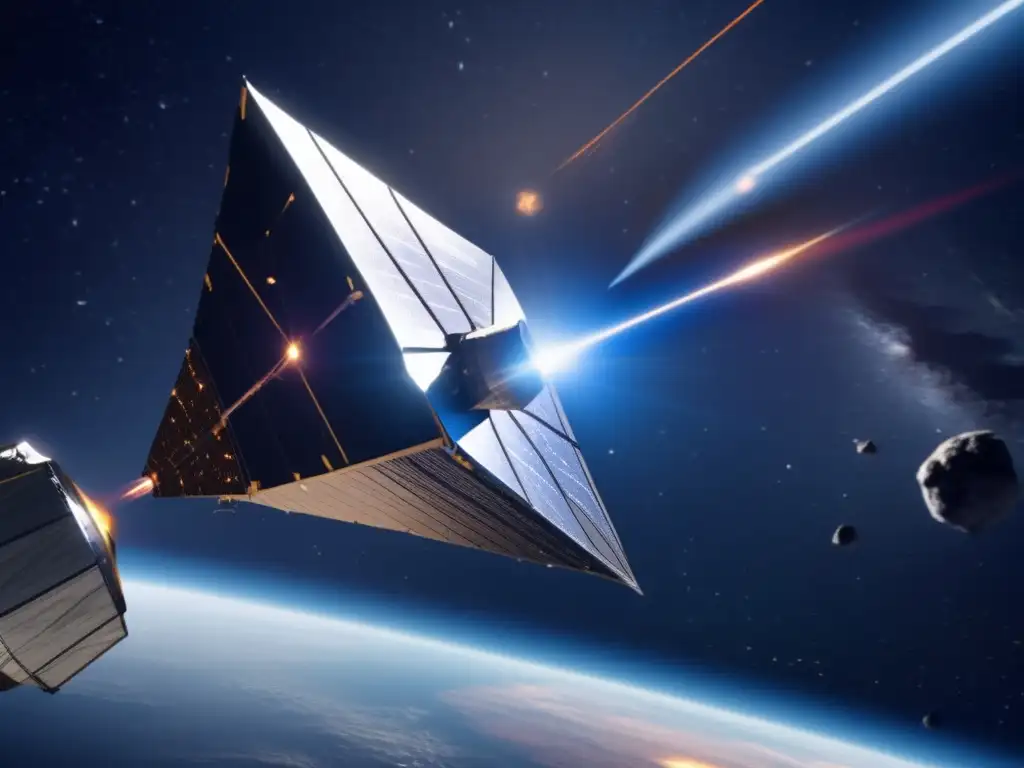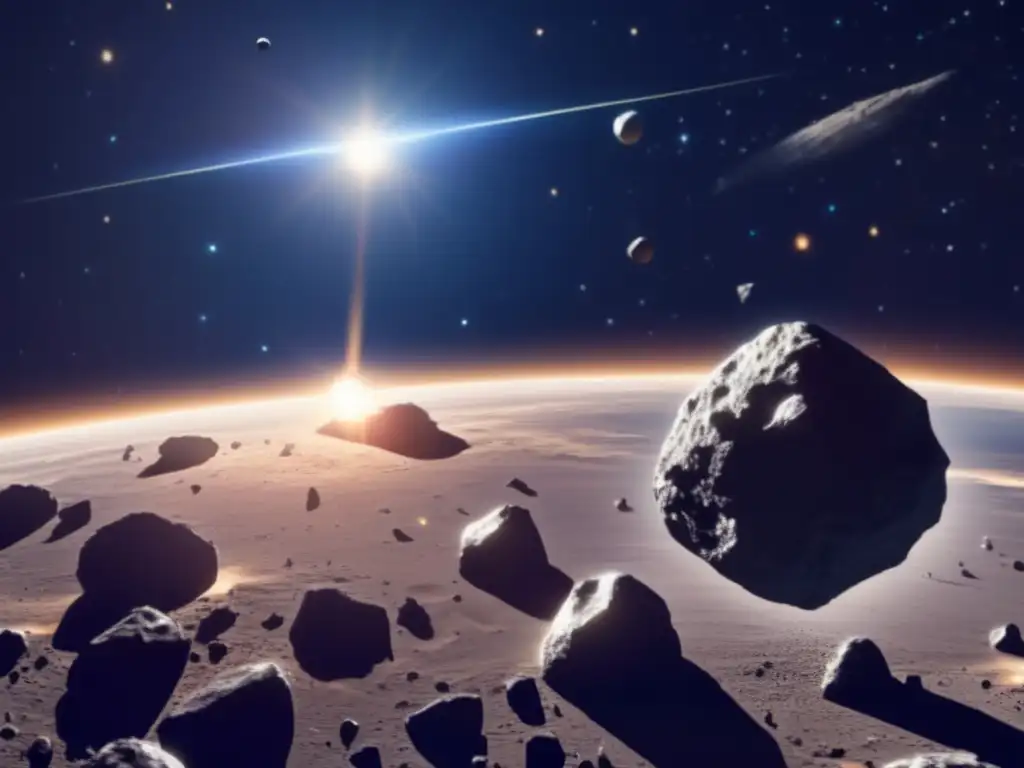Avoiding The Big Impact: Current Measures In Asteroid Defense

Introduction
Asteroids are celestial bodies that can pose a significant threat to Earth. Collisions between asteroids and our planet have happened before, with devastating consequences. The Tunguska event in 1908 was caused by an asteroid that exploded in the atmosphere with the energy of 10-15 megatons of TNT, flattening thousands of square kilometers of forest. More recently, the Chelyabinsk meteorite exploded over Russia in 2013, injuring over a thousand people, and causing widespread damage to buildings and infrastructure. These events remind us of the importance of planetary defense and the need to develop measures to detect and deflect any dangerous asteroids that may be headed our way.
Current Measures in Asteroid Defense

NASA's Planetary Defense Coordination Office
One key organization leading the charge in planetary defense is NASA's Planetary Defense Coordination Office (PDCO). Established in 2016, the PDCO is responsible for coordinating and implementing efforts to detect, track, and characterize potentially hazardous asteroids and comets. The office operates a series of telescopes and spacecraft equipped with specialized instruments to collect data on near-Earth objects (NEOs) and assess their potential impact threat. The PDCO also partners with other organizations and agencies, both domestic and international, to develop mitigation strategies and action plans in the event of a real threat.
Asteroid Impact and Deflection Assessment (AIDA)
Another ongoing effort to develop asteroid defense measures is the Asteroid Impact and Deflection Assessment (AIDA) mission. A joint project between NASA and the European Space Agency (ESA), AIDA aims to study the effects of a kinetic impactor spacecraft colliding with an asteroid. The mission will consist of two spacecraft, the NASA-led Double Asteroid Redirection Test (DART) and the ESA-led Hera mission. DART will collide with the asteroid Didymos' smaller moonlet, while Hera will observe and analyze the impact and resulting deflection. The goal of the mission is to test whether a kinetic impactor could be an effective method of deflecting an asteroid on a collision course with Earth.
Planetary Defense Technologies
In addition to these broader efforts, several specific technologies are being developed to enhance asteroid defense capabilities. One such technology is the NEO Surveillance Mission (NEOSM), a proposed spacecraft equipped with a telescope and camera that can detect and track NEOs. Another technology is the Laser Interferometer Space Antenna (LISA), a space-based gravitational wave detector that could potentially detect small changes in gravitational waves caused by close approaches or collisions between asteroids and the Earth. Other technologies being explored include nuclear explosives, high-powered lasers, and solar sails.
Challenges and Future Directions

Limitations of Current Detection Methods
Despite significant progress in asteroid detection and characterization, there are still limitations to our current methods. Telescopes can only detect and track NEOs that are large enough and bright enough to be seen, meaning smaller objects may be missed. There is also the possibility of so-called "dark asteroids," which are non-reflective and therefore difficult to detect. Additionally, current detection methods rely on optical observations, which are limited by weather conditions and the time of day. Improving our detection capabilities will require continued research and investment in new technologies.
Increased International Collaboration
Another important step in asteroid defense is increased international collaboration. Cooperation between agencies, universities, and private companies can help to pool resources, share expertise, and advance the development of new technologies. The United Nations Office for Outer Space Affairs (UNOOSA) has been working towards this goal through its Action Team on Near-Earth Objects, which brings together experts from around the world to discuss asteroid defense strategies and develop international cooperation agreements.
The Importance of Public Education and Outreach
Finally, public education and outreach are crucial in the effort to increase awareness and support for asteroid defense measures. Many people are not aware of the potential threat that asteroids pose or the ongoing efforts to detect and deflect them. Increasing public knowledge and engagement can help to build support for funding and research into asteroid defense technologies and create a more informed and prepared society.
Frequently Asked Questions

-
What is the likelihood of an asteroid impact with Earth?
The probability of a catastrophic asteroid impact is low, but the consequences would be severe. Therefore, it is important to continue investing in asteroid detection and deflection measures.
-
Can an asteroid be deflected or redirected?
Yes, there are several methods being developed to deflect or redirect an asteroid. These include kinetic impactors, nuclear explosives, high-powered lasers, and solar sails.
-
How much warning time would we have before an asteroid impact?
The amount of warning time depends on the size and trajectory of the asteroid. Current detection methods usually provide several years' notice, but smaller objects may not be detected until they are much closer to Earth.
-
What is the role of the Planetary Defense Coordination Office?
The Planetary Defense Coordination Office is responsible for coordinating and implementing efforts to detect, track, and characterize potentially hazardous asteroids and comets. The office also partners with other organizations and agencies to develop mitigation strategies.
-
What can I do to help support asteroid defense measures?
Become informed about the issue, support funding for research and development of asteroid defense technologies, and participate in public outreach and education activities.
Conclusion
Asteroid defense remains an important challenge and requires continued effort and investment. While progress has been made in detection and deflection technologies, there are still limitations and challenges to be overcome in the future. Increased international collaboration and public engagement can help to advance the cause of asteroid defense and build a safer and more prepared world.
Thank you for taking the time to read this article. We encourage you to share your thoughts and comments with us below and explore our website, www.asteroidrealm.com, for more information on asteroids and related topics.
Additional Resources

 Bracing For Impact: The Future Of Planetary Defense
Bracing For Impact: The Future Of Planetary Defense Planet Defense 101: Tools And Techniques Against Asteroids
Planet Defense 101: Tools And Techniques Against Asteroids Guardians Of The Atmosphere: Strategies For Asteroid Defense
Guardians Of The Atmosphere: Strategies For Asteroid DefenseIf you want to discover more articles similar to Avoiding The Big Impact: Current Measures In Asteroid Defense, you can visit the Planetary Defense category.
Leave a Reply

Articulos relacionados: